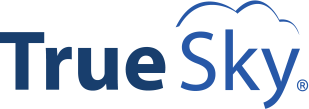How to Align Your Cloud Strategy and IT Organization Structure
 Today’s businesses are becoming increasingly cloud-centric, and with that could come organizational change — particularly for the IT organization structure.
Today’s businesses are becoming increasingly cloud-centric, and with that could come organizational change — particularly for the IT organization structure.
As more processes move to digital, a cloud strategy is not just a nice-to-have; it is a must-have. Deciding what cloud technology to invest in, when to make the investment, planning software implementations, and more are all important points to consider.
But there is another consideration to make — the structure of the IT department.
Traditionally, IT teams have worked in silos and been a backbone of business, but they have not necessarily been decision makers or brought into the corporate planning process.
However, in the new cloud-enabled world, the IT organization structure can (and should) be more strategic since they will need to manage technology in every aspect of the organization — from marketing to finance to facilities to purchasing to HR and beyond.
We came across this great infographic from Microsoft that shows three types of IT structures businesses might consider as they become more cloud-centric:
We will break each one down further.
- Decentralization
Decentralization is when daily operations and decision-making are delegated from the top management to middle and lower-level managers. This allows the top manager to focus more on the major decisions, strategic planning, and long-term goals.
Pros:
- Employees can be more empowered.
- It allows for long-term planning while still assuring that the daily operations are not forgotten.
- It can increase empathy between end-users and IT.
Cons:
- It can be difficult to manage IT spending.
- Can create security vulnerabilities.
- If the daily operations are not aligning with the strategic goals, it can be easy for the organization to get off track.
- Customer-Centric
Customer-centric IT organizations approach technology like “services.” The IT department becomes the bridge between internal processes and outsourced vendors with a focus on the customer experience. This might mean using cloud technology and IT processes to create a better customer journey.
Pros:
- Done right, this can retain customers and help make their experience more enjoyable.
- It can increase sales, as found by Chico in 2015.
- It could make the work more meaningful for IT employees and empower them to think outside of the box.
Cons:
- This type of management can be chaotic and hard to make strategic.
- Certain organizations, like Xerox and Cisco, found they did not have good results.
- It means that IT teams require more “people skills” rather than just technological know-how.
- Strategic Steering Arm
In this structure, the IT department (normally guided by the CIO) appoints a strategic role or team to think about how technology can better serve people in the organization. This could also look like the IT team being involved in strategic decision-making and brought into the planning process.
Pros:
- Can help guide how the organization embraces technology and digital transformations.
- Can help the IT department understand company priorities to focus their internal processes.
- Looks at the bigger picture and gives a holistic view of the company.
Cons:
- Can lead to disagreements if there are competing priorities.
- Could be tension around the reporting configuration.
- Daily operations must work to support the larger strategy — it can be easy for this type of management to devolve into lots of talk with no action.
There is no one right or wrong IT organization structure for your business. It all depends on your industry, strategic goals, and current make-up. But as business becomes increasingly digital, it is important to consider a structure that will enable your company to support an ongoing cloud strategy.
True Sky gives you the option to implement on-premise or as a cloud-based software. It simplifies the budgeting, planning, and forecasting process. We can help you understand your company’s IT requirements. Contact us today. Call 1 855 878 3759 or visit www.truesky.com.



